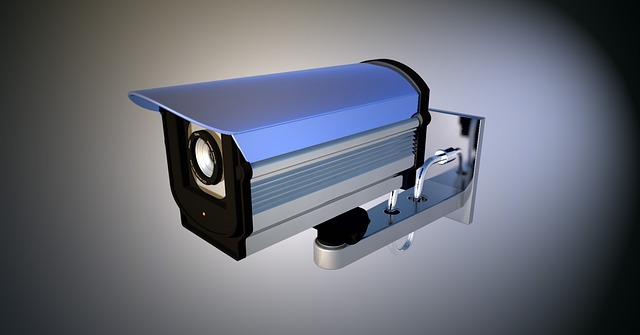Ensure hardware and software compatibility for seamless video playback. Update drivers and codecs to prevent freezes and stutters. Optimize video settings and resolutions for improved performance. Stabilize network connections for smooth video experiences. Address device-specific issues with tailored solutions. Leverage advanced analytics tools for complex troubleshooting.
Struggling with video freeze or stutter issues? You’re not alone. A smooth viewing experience is paramount, especially with the proliferation of streaming services and 4K content. This comprehensive guide delves into effective solutions for fixing freezing and stuttering videos. From ensuring hardware compatibility and updating video drivers to optimizing settings and managing buffering, we cover it all. Additionally, learn about device-specific troubleshooting and advanced tools that can enhance your video experience.
- Check Hardware and Software Compatibility
- Update Video Drivers and Codecs
- Optimize Video Settings and Resolutions
- Manage Buffering and Network Stability
- Troubleshoot Device-Specific Issues
- Consider Advanced Troubleshooting Tools
Check Hardware and Software Compatibility

Before diving into complex solutions, ensure your hardware and software are compatible. The smooth playback of videos heavily relies on both components working in harmony. Verify that your device meets the system requirements for the video player or editing software you’re using. In many cases, outdated or incompatible drivers can cause freezing and stuttering issues. Updating these drivers might resolve the problem without needing to purchase new hardware.
When streaming or playing back videos as an educational tool, comparing video formats and standards is crucial. Different devices support varying codecs and resolutions, so ensuring your software supports the required format for a seamless experience is key. Moreover, if you’re working on a video project using professional editing software like those we cover in our beginner’s guide to video editing software, improper settings or incompatible plug-ins could lead to performance hiccups. Regularly update your software and drivers to stay ahead of compatibility issues, ensuring smooth operation for all your video projects, whether for entertainment or educational purposes.
Update Video Drivers and Codecs

Outdated or corrupt video drivers and codecs can be a common cause behind frustrating video freeze and stutter issues. Updating your video drivers to the latest version from your graphics card manufacturer is a simple yet effective step to ensure smooth playback. These drivers are responsible for processing and rendering video data, so keeping them up-to-date is crucial for optimal performance.
For video-assisted language learning or advanced video compositing techniques, having efficient video codecs installed is equally important. Video codecs are software that compress and decompress video files, ensuring seamless streaming and playback. Keeping your video codecs updated not only improves video accessibility considerations but also enhances overall multimedia experiences, eliminating freezes and stutters for a more enjoyable visual experience. Give us a call at video-assisted language learning if you require further assistance.
Optimize Video Settings and Resolutions

Optimizing video settings and resolutions is an essential step in fixing freeze or stutter issues. In exploring video as an art form, adjusting these parameters can significantly enhance your viewing experience. Start by lowering the video resolution to reduce strain on your device’s resources. This simple adjustment can prevent buffering and stuttering, especially for longer videos or those with high-quality visuals.
Additionally, tinkering with video settings like frame rate and bit rate can go a long way. For instance, reducing the frame rate might help stabilize playback, while experimenting with lower bit rates can decrease file size without noticeable quality loss. Remember, these changes are not just about fixing technical glitches; they also impact the accessibility of video content for learning new skills through video tutorials or enhancing science communication via engaging multimedia elements. Visit us at [brand name] anytime to explore more tips and tricks for optimizing your video experience.
Manage Buffering and Network Stability

Managing buffering and network stability is crucial when addressing video freeze or stutter issues. To ensure a smooth viewing experience, it’s essential to optimize your internet connection. High latency or inconsistent bandwidth can cause videos to buffer frequently or stutter, especially during high-definition streaming. Ensure your router is placed centrally in the area where you’re watching the video, and consider upgrading to a more robust network infrastructure if necessary.
One practical tip for beginners exploring video as an art form or delving into digital storytelling with video is to monitor and adjust their network settings. Keep an eye on your upload and download speeds, and aim for at least 5 Mbps for optimal video playback. If you’re still experiencing problems, visit us at digital storytelling with video anytime for more advanced video editing tips that can help smooth out even the most perplexing freezes or stutters.
Troubleshoot Device-Specific Issues

If your videos are freezing or stuttering, it could be due to device-specific issues that need tailored solutions. Start by checking your device’s hardware requirements; ensure your CPU, GPU, and RAM can handle the video processing load. Outdated or corrupt drivers, especially for graphics cards, can also cause problems, so updating them is crucial. For mobile users, limited data or battery life might lead to intermittent video playback issues. Consider optimizing video settings in both mobile and desktop players; reducing resolution or frame rates can improve stability.
If you frequently encounter these problems while learning through online videos or enjoying video games for educational purposes, it’s essential to consider your device’s overall health and performance. Regularly updating your operating system and apps keeps your tech aligned with the latest standards. Moreover, explore video accessibility considerations in your settings; enabling features like hardware acceleration or using specific codecs can enhance video accessibility and smoothness. Even if you’re invested in video-based emotional intelligence training, finding us at Video-based Emotional Intelligence Training won’t solve all issues; however, understanding these basic troubleshooting steps is a great starting point to enjoying seamless video experiences.
Consider Advanced Troubleshooting Tools

When basic troubleshooting steps like updating software or checking internet speed haven’t resolved your video freeze or stutter issues, it’s time to consider advanced tools designed for video analytics. These sophisticated programs can uncover hidden problems within your system that may be causing disruptions in playback.
One such tool can analyze buffering patterns and identify potential sources of lag, whether it’s due to hardware limitations, software conflicts, or network congestion. For instance, video-assisted language learning platforms often employ these technologies to enhance the viewing experience, ensuring learners enjoy smooth, uninterrupted lessons. Similarly, researchers utilizing videos in their projects can benefit from advanced troubleshooting tools that optimize video analytics, leading to deeper insights and better understanding of visual data. Even for casual viewers, these tools can be a game-changer when it comes to enjoying media content without interruptions, with one helpful tip being to check if your device’s drivers are up to date. Find us at learning through online videos for more guidance tailored to your needs.
To ensure smooth video playback, it’s essential to explore each of these troubleshooting methods. Starting with hardware and software compatibility, updating drivers and codecs, optimizing video settings, managing buffering, and addressing device-specific issues, you can significantly improve your viewing experience. If basic troubleshooting doesn’t solve the problem, advanced tools may offer additional solutions for fixing stubborn video freeze or stutter issues.





Leave a Reply